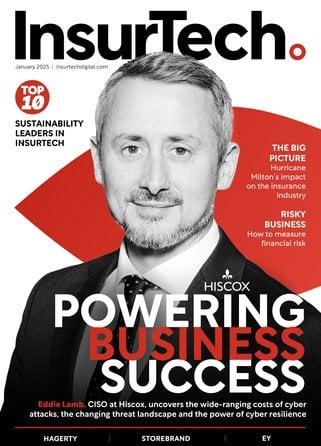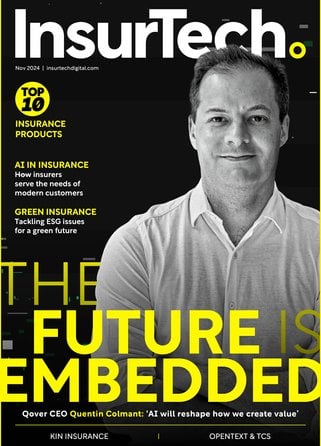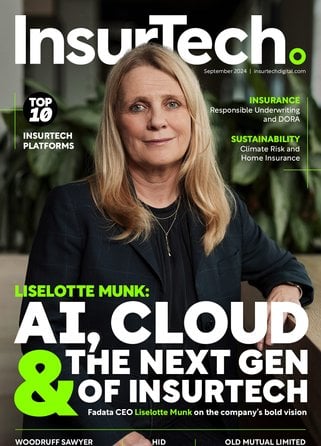Five Tips For Successful Embedded Insurance Deployment

Insurance is moving beyond just the realm of homeowners and auto. Embedded insurance - aka purchase protection - is on the rise as online retailers are offering this for a majority of their products. If you have purchased an electronic product through Amazon, you’ve most likely been asked if you want to protect it for the next three years.
This movement of integrating insurance into more complex, high-value transactions offers customers a frictionless experience in their purchasing journey.
For instance insurance companies could offer quick homeowners insurance quotes with the option to begin the full quote to bind process during an online mortgage application.
The challenge comes creating the streamlined embedded insurance process with the right partner, technology and data use.
Ekine Akuiyibo is the Chief Business Officer at Socotra, where he oversees field engineering, product delivery, partnerships, training, and support. With more than 20 years of experience, he has worked at Oracle, Sun Microsystems, and BAE Systems. He holds a PhD in Electrical Engineering from Stanford University.
Commenting on the industry, he states, "The introduction of embedded insurance products can significantly enhance the customer experience—if executed correctly. The embedded insurance market is experiencing substantial growth and is projected to grow significantly."
Here are the five key factors to consider, according to Ekine:
- Customers don't necessarily expect to be offered an embedded insurance product at all, so it's critical that their experience is seamless. The product should be presented and quoted where the customer was already making their initial purchase, and they should be able to complete their purchase in the same system they started their buying journey in. Because you are offering them something they were not already considering, it's critical that they are able to add it to their original purchase with a few simple clicks and not feel like their buying experience has been interrupted. This seamless connection is all but impossible without APIs, so your core systems need to have robust ones that your partner can easily work with in order to build this relationship.
- Following up with customers after their purchase can be a great opportunity to build trust and possibly engage them to do more with you in the future - but remember, they bought embedded insurance through your relationship with another vendor, so if you reach out to them afterwards, the initial touchpoints should come (or appear to come) from the retail partner they bought from in the first place. You don't want them to feel like you are making a cold outreach; they may not even remember who they made the embedded insurance purchase from in the first place, but they will either remember their initial retail purchase or have a recent record of it through your retail partner.
- Consumers are increasingly likely to view purchase protection as a warranty of sorts, which it is not - so it's important to choose partnerswhose products or services don't have a high potential to experience a large volume of claims, or at the least to make sure that the rating process includes a thorough evaluation of consumer behaviours with similar products or services. Travel insurance, for example, is a relatively low-risk market, with the average traveller today having smooth and painless experiences from their vendors. However, offering purchase protection for newer merchants that offer a high volume of low-priced wares may expose you to a high volume of claims, and these types of goods typically cannot be repaired and must be replaced at full cost. Make sure you evaluate your partners with a strong consideration to how well they stand behind their products and/or services with their own warranties, customer service, or other means of making things right in the event of a loss.
- Smaller, often local merchants that offer handmade or custom-made goods can realize a lot of potential value from partnering with an insurance provider; after all, their wares may truly be irreplaceable. It's not just the retail giants of the world that can or should offer embedded insurance along with a carrier partner, and the market may be much larger than you have considered.
- In order for consumers to feel like embedded insurance adds value to their buyer journeys, it cannot slow down the process of purchasing whatever it is that they set out to obtain in the first place. Your system has to be able to respond immediately and provide the insurance product you are offering in real time - otherwise both you and your retail partner run the risk of alienating potential buyers. That policy must be offered and bound without any perceptible lag, so your system and your APIs must be based in the cloud, unwaveringly reliable, and so fast that there is no way for a human to feel like the background processes involved are hampering their experience in any way.
**************
Make sure you check out the latest industry news and insights at InsurTech Digital and also sign up to our global conference series - FinTech LIVE 2024
**************




